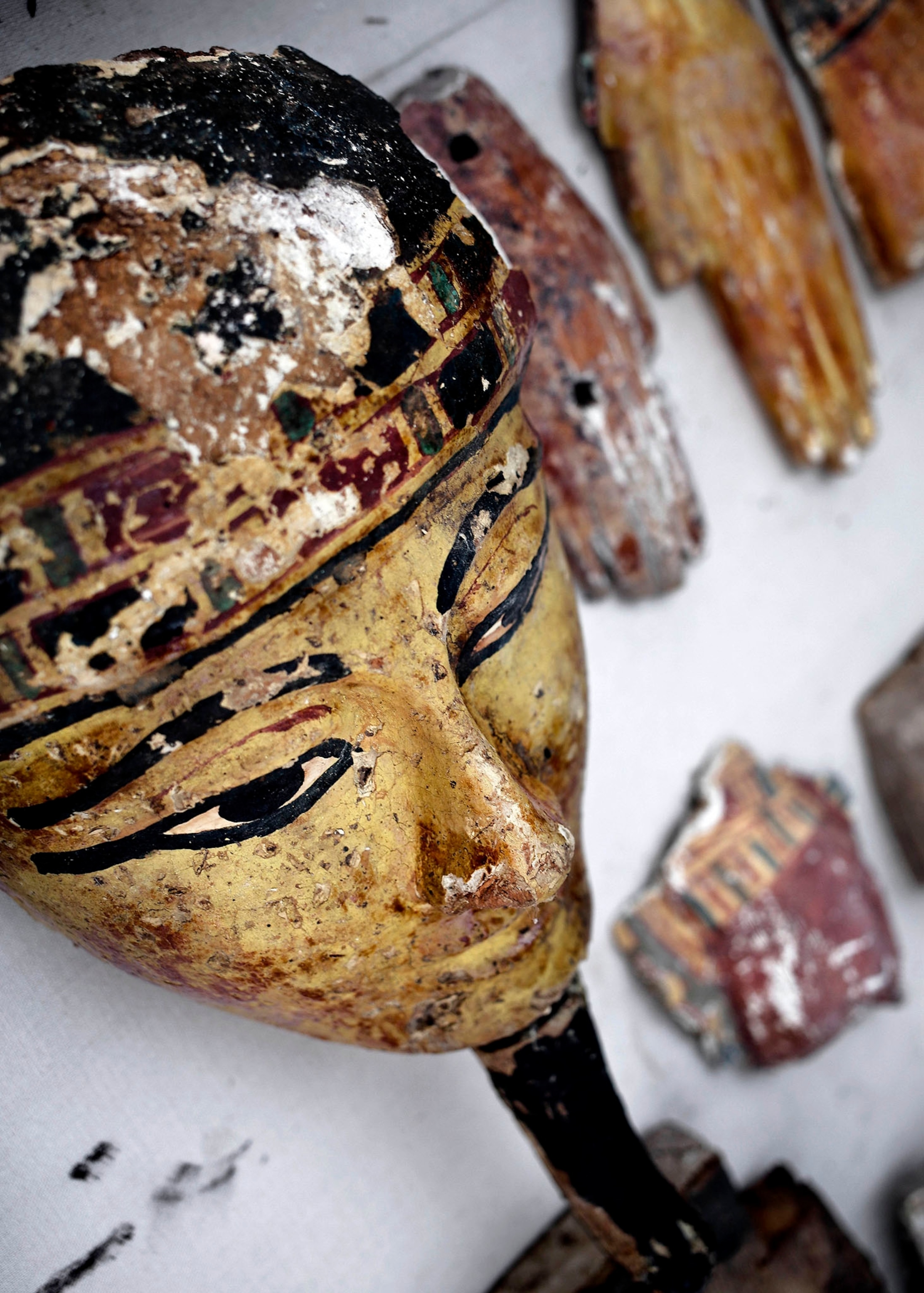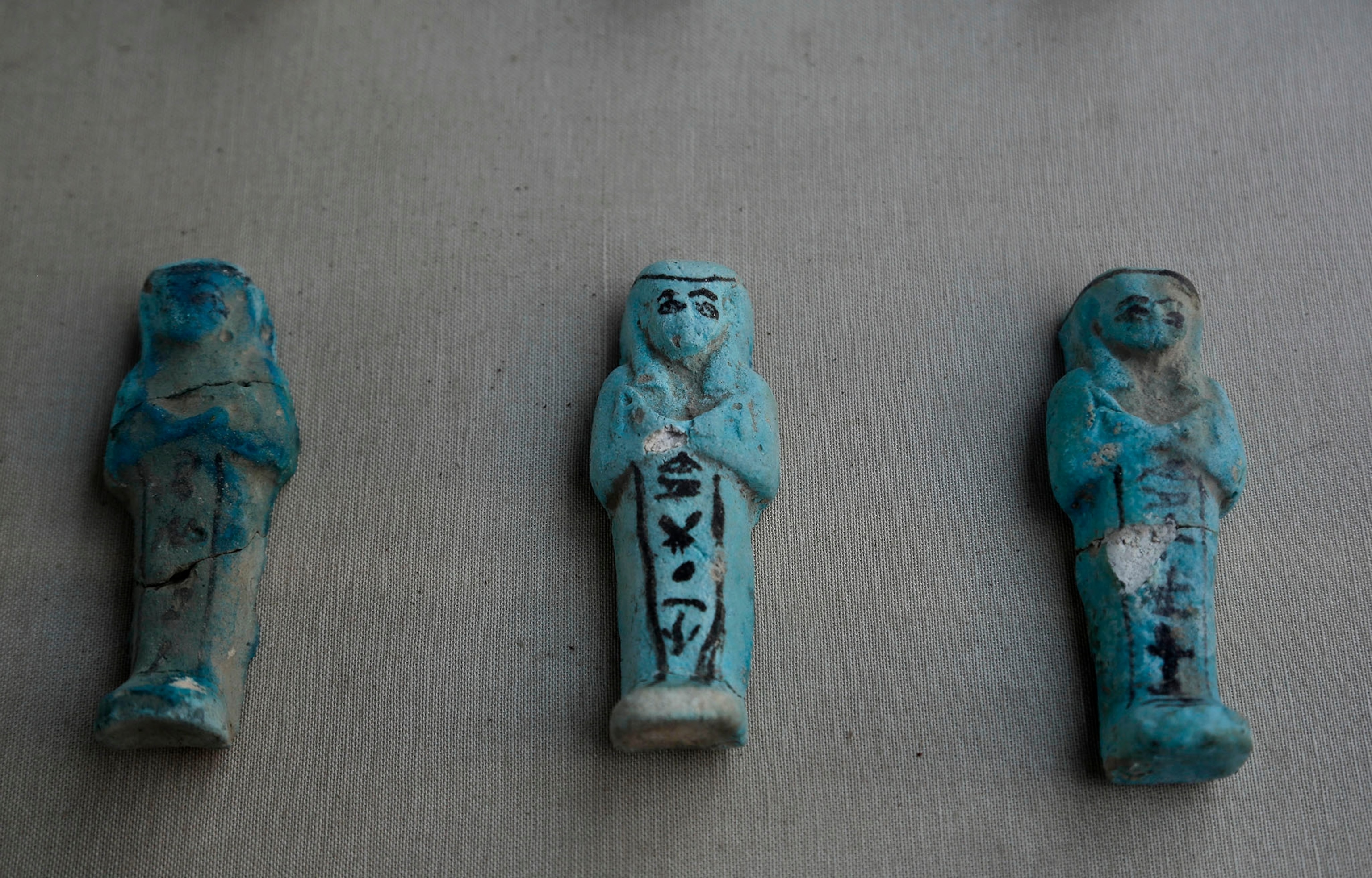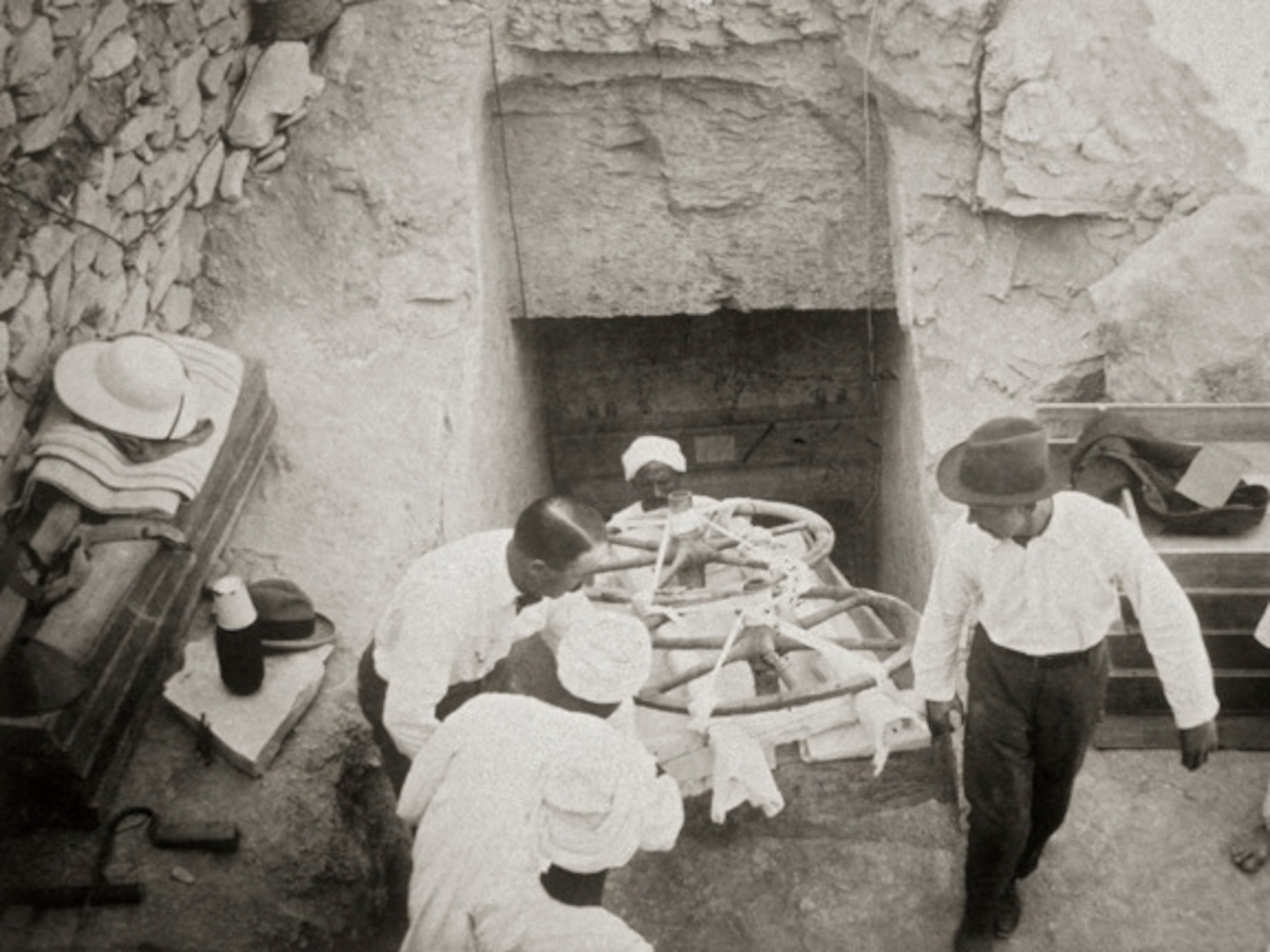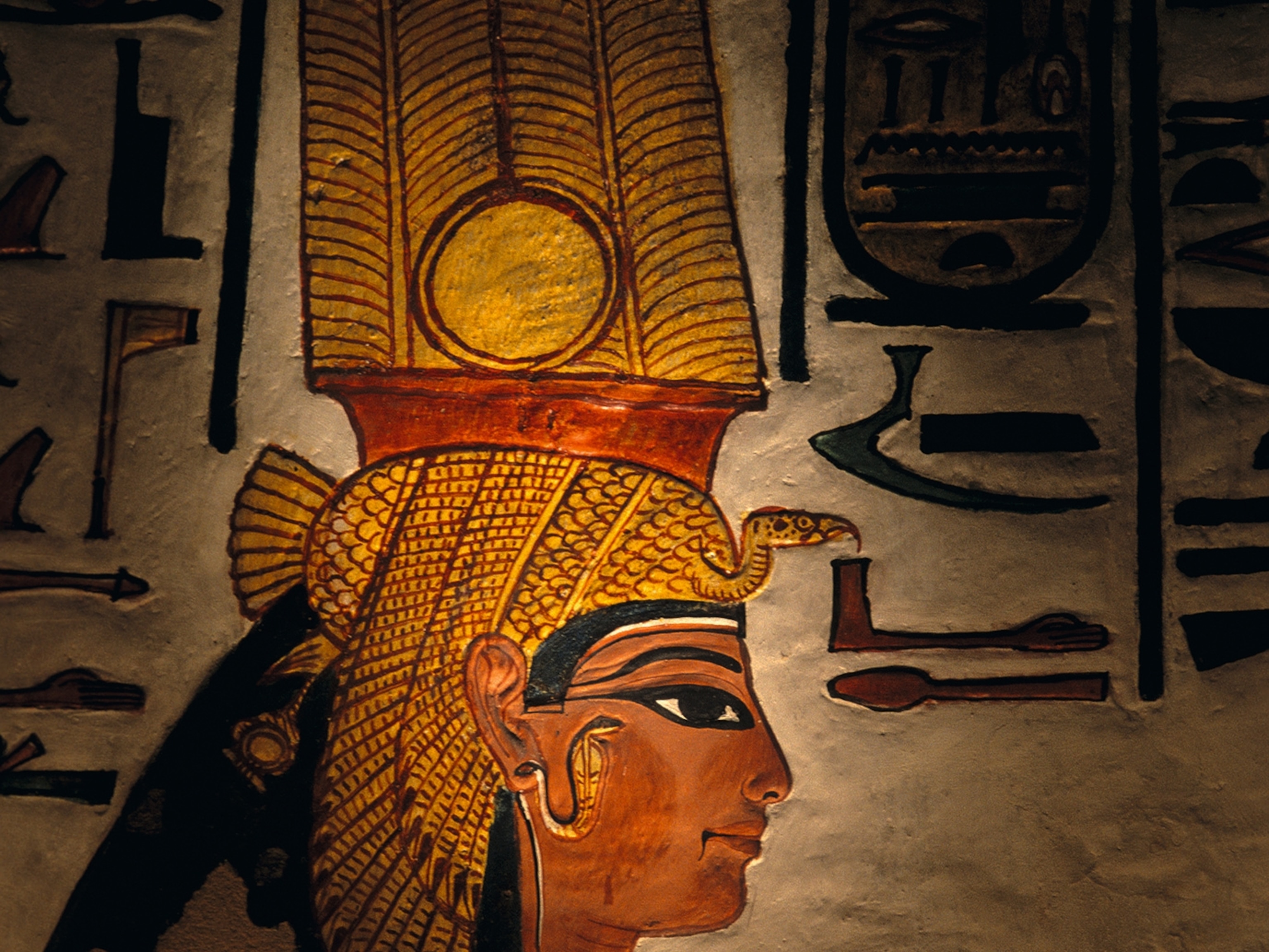Get a First Look Inside a Newly Opened Egyptian Tomb
The 3,500-year-old site discovered near Luxor belonged to a goldsmith and his wife.
The crumbling statue of a goldsmith and his wife greeted visitors who recently peered inside a 3,500-year-old tomb near Luxor, Egypt, for the first time.
Discovered at the Dra Abul Naga necropolis on the west bank of the Nile, the newly opened tomb holds statuettes, mummies, pottery, and other artifacts, according to Egypt's Ministry of Antiquities. The ministry announced the tomb’s discovery at a special ceremony on Saturday.
One of the statues depicts a goldsmith named Amenemhat sitting beside his wife. A figure of one of their sons stands beneath them. The archaeologists say the family lived during Egypt's 18th Dynasty. (Also see pictures of King Tut's father, Egypt's first revolutionary.)
Beyond, two burial chambers hold a number of mummies, sarcophagi, and funerary masks carved in wood, along with more statuettes of the couple. The second chamber holds sarcophagi from the 21st and 22nd Dynasties. (Read about three ancient Egyptian tombs discovered south of Cairo.)
The newly opened tomb is not in good condition, Minister of Antiquities Khaled El-Enany told reporters. But its contents may yield clues to other discoveries. For instance, the tomb contains 50 funerary cones—a type of stamped pottery—40 of which offer evidence of other tombs belonging to four officials from the period, the ministry announced in a press statement.
The expedition into the tomb also revealed other burial shafts nearby. In one, teams found the mummy of a woman who had died at age 50, along with the remains of her two children. Initial examinations of the woman's remains showed that she probably suffered from several diseases, including a bacterial disease in her bones, according to the ministry's statement.
In April, a team of Egyptian archaeologists discovered a separate tomb in the same necropolis containing several mummies, 10 wooden sarcophagi, and more than a thousand funerary statues. At the time, El-Enany hailed the find's significance because of the high number of items found intact.
Both of these recent discoveries are near the Valley of the Kings, the final resting place of some of Egypt's most famed rulers, including the young King Tutankhamun. The city of Luxor sits to the east of the Nile, and Egyptians from the ruling and upper classes were buried to the west as a sign of reverence.












